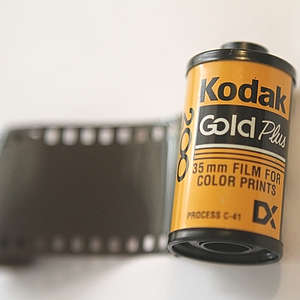Eastman Kodak, the iconic photographic company synonymous with capturing life’s most precious moments, has filed for Chapter 11 bankruptcy protection in the hope of salvaging the 120 year old company.
Unlike Chapter 7 filings, where a company ceases to operate, under Chapter 11 of the United States Bankruptcy Code, companies can continue trading, with protection from creditors, while they restructure their business.
A Kodak moment
 According to reports, the company has also obtained a $950 million (£615m), 18-month loan from Citigroup to keep it afloat, while it restructures and finds buyers for its 1,100 digital patents.
According to reports, the company has also obtained a $950 million (£615m), 18-month loan from Citigroup to keep it afloat, while it restructures and finds buyers for its 1,100 digital patents.
In a statement, the company added that subsidiaries outside the US would not be subject to the filing and would continue operations as usual.
“Kodak is taking a significant step toward enabling our enterprise to complete its transformation,” said Antonio Perez, Chairman and Chief Executive Officer in the statement. “At the same time as we have created our digital business, we have also already effectively exited certain traditional operations, closing 13 manufacturing plants and 130 processing labs, and reducing our workforce by 47,000 since 2003. Now we must complete the transformation by further addressing our cost structure and effectively monetising non-core IP assets. We look forward to working with our stakeholders to emerge a lean, world-class, digital imaging and materials science company.”
Hemorrhaging money
According to Reuters, Kodak has struggled in recent years, not showing profits since 2007. Its difficulties in adapting to the changing market have had a huge impact on its value. Pegged at $31 billion (£20bn) 15 years ago, Kodak’s market value has plummeted to below $150 million (£97m), with the company showing total assets of $5.1 billion (£3.3bn) and liabilities of $6.75 billion (£4.37bn) at the end of September 2011.
“Chapter 11 gives us the best opportunities to maximise the value in two critical parts of our technology portfolio: our digital capture patents, which are essential for a wide range of mobile and other consumer electronic devices that capture digital images and have generated over $3 billion (£1.9bn) of licensing revenues since 2003; and our breakthrough printing and deposition technologies, which give Kodak a competitive advantage in our growing digital businesses,” added Perez.
Kodak, which in effect is responsible for the modern camera, missed the digital revolution, but is now attempting to revive its income using patent litigation against Apple, HTC, Fujifilm and most recently, Samsung.





